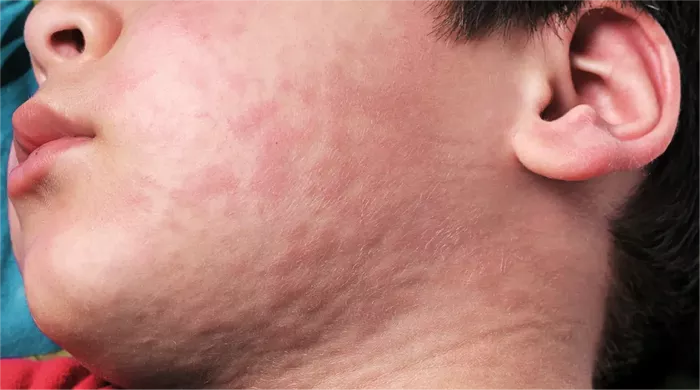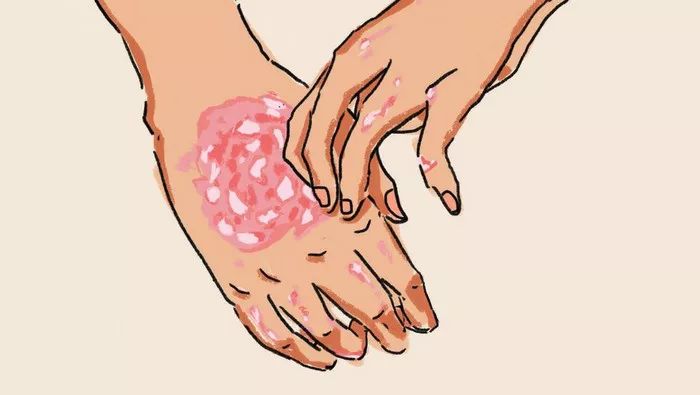Hives, medically known as urticaria, are a common skin condition characterized by raised, itchy welts on the skin. While hives are often associated with external triggers such as allergens or irritants, they can also be a manifestation of underlying internal diseases. This article aims to explore the intricate relationship between internal diseases and hives, shedding light on the mechanisms involved and the importance of proper diagnosis and management.
What Are Hives?
Before delving into the internal disease aspect, it’s crucial to understand what hives are and how they manifest. Hives typically appear as red, raised welts on the skin that are often accompanied by itching. These welts can vary in size and shape and may merge together to form larger patches. Hives can occur anywhere on the body and can come and go within a matter of hours.
External Triggers vs. Internal Causes
While external triggers like certain foods, medications, insect stings, or environmental factors are common causes of hives, they can also be a symptom of internal diseases. Internal factors such as autoimmune disorders, hormonal imbalances, infections, and underlying medical conditions can trigger the immune system to release histamine, leading to the development of hives.
Autoimmune Disorders and Hives
Autoimmune disorders occur when the immune system mistakenly attacks healthy tissues in the body. Conditions such as lupus, rheumatoid arthritis, and thyroid disorders have been linked to the development of chronic hives. In these cases, the immune system’s dysregulation can lead to the release of inflammatory substances like histamine, resulting in hives as a visible manifestation of the underlying autoimmune process.
Hormonal Imbalances
Hormonal fluctuations can also play a role in the development of hives. Conditions such as thyroid dysfunction, particularly hypothyroidism, and hormonal changes during pregnancy or menopause have been associated with hives. Hormones influence various physiological processes, including immune function and skin health, and disruptions in hormonal balance can trigger the release of histamine, leading to hives.
Infections and Hives
Certain infections, both viral and bacterial, can provoke an immune response that manifests as hives. Infections such as the common cold, hepatitis, urinary tract infections, and viral illnesses like Epstein-Barr virus or cytomegalovirus have been reported to trigger acute or chronic hives. The body’s immune reaction to these infections can result in the release of histamine, contributing to the development of hives.
Underlying Medical Conditions
Beyond autoimmune disorders, hormonal imbalances, and infections, various other underlying medical conditions can be associated with hives. These may include chronic diseases such as diabetes, liver or kidney disorders, and malignancies. While the exact mechanisms linking these conditions to hives may vary, systemic inflammation, immune system dysregulation, or metabolic disturbances could contribute to their development.
Diagnosis and Management
Given the diverse range of internal diseases that can manifest as hives, accurate diagnosis is paramount for effective management. Healthcare providers typically perform a thorough medical history review and physical examination to identify potential underlying causes. Diagnostic tests such as blood tests, allergy testing, and imaging studies may be ordered to rule out specific conditions and assess overall health status.
Once an underlying cause is identified, treatment focuses on addressing both the underlying disease and the symptoms of hives. This may involve medication to control inflammation and suppress the immune response, as well as lifestyle modifications to minimize triggers and promote overall health. In cases where hives are primarily triggered by an external factor, such as allergens or medications, avoidance of these triggers is essential to prevent recurrence.
Conclusion
Hives are not always just a benign skin reaction; they can serve as a crucial indicator of underlying internal diseases. Understanding the link between hives and internal conditions is essential for accurate diagnosis and appropriate management. Healthcare providers and individuals alike should remain vigilant for signs of systemic diseases when evaluating and treating patients with hives, ensuring comprehensive care and optimal outcomes.

























